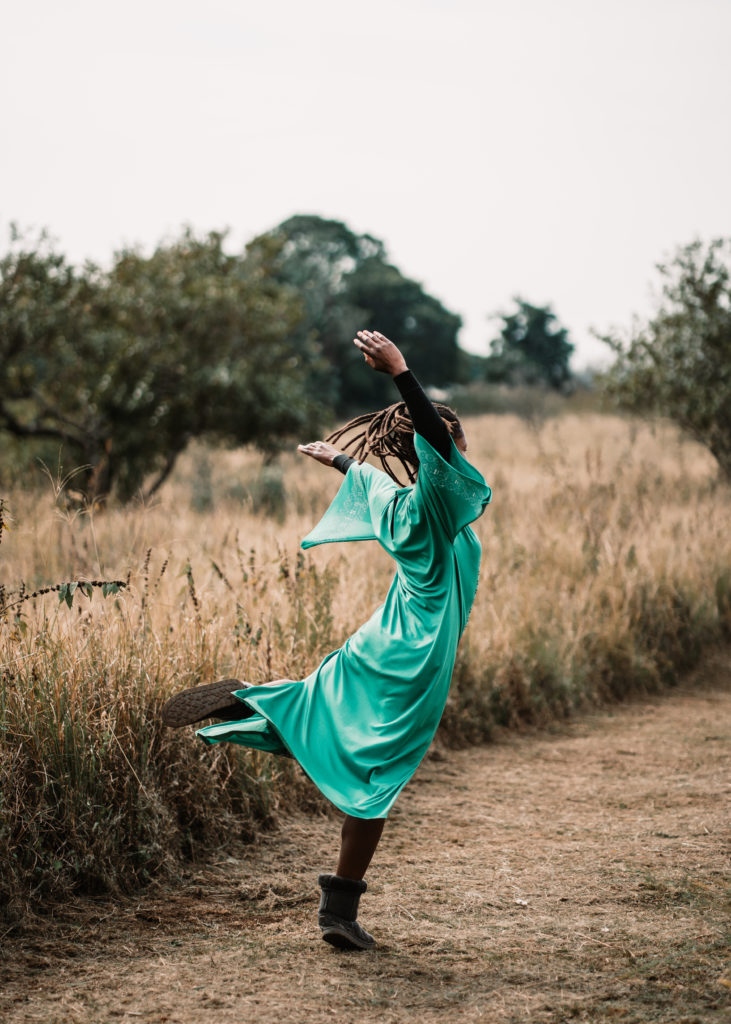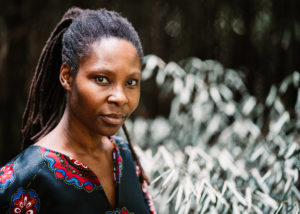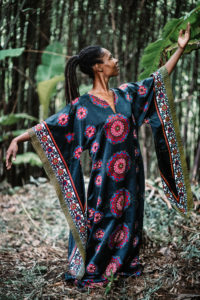
I was born in the early 1980s in the coastal city of Durban, South Africa, to a nurse and a lawyer. My parents named me after their mothers: Bathobile Angeline Maphanga and Jane Mgijima. I grew up in the township of Clermont, which sits approximately 20km west of Durban in the province of KwaZulu-Natal. Clermont was one of the first areas where Black South Africans could buy and own small properties during apartheid. My grandmother Bathobile had bought a couple of properties to ensure that her kids would always have a roof over their heads, and the house we lived in together she willed to me, her first and only grandchild, at the time of her death. I write from the comfort of this home now, almost 40 years later.
Sounds of my youth
Although I’m an only child, my home was always full. Aunties, cousins, and family friends who had come seeking shelter from less favourable inland parts of South Africa, or to work or study in Durban, often stayed with us as they found their feet. As a result there were many tongues spoken in our home. My mother was from Kimberley in the Northern Cape, approximately 800 km west of Durban; The Northern Cape is where the original languages of the Nama, Khoi and San people were spoken in their various dialects, eventually mixed with the languages of the migrating Nguni tribes and with those of the Dutch and then English Settlers. Many of these languages and their dialects, which were not preserved nor made official South African languages, have been forgotten and lost.
South Africa is an incredibly diverse country; each area has its own distinctive culture, language, and way of being. My mother, who was born to a Zambian father and Xhosa mother, had grown up in an area where Sepedi, Setswana, and Afrikaans were, and still are, the predominant languages. My father, born in Natal to a Zulu woman, father unknown, spoke isiZulu and some English, but moved to live with his aunt in Kimberley when his mother married a Sesotho man. By the time he returned to Durban as a married man, my father spoke five languages.
I remember as a small child my parents would fight in Afrikaans, the language of the oppressive apartheid government, which they had been forced to learn in school. They assumed I wouldn’t understand them because Natal, the last outpost of the English, was not an Afrikaans-speaking province. But by the time I was enrolled in St. Mary’s Diocesan School for Girls (DSG) in 1991, I could express myself in isiZulu, Setswana, Afrikaans, and English, and understood isiXhosa, Sepedi, and Sesotho.
St. Mary’s DSG was a world that Black people had had no access to until the 1990s. It was, and remains, a pristine, all girls private school with boarding facilities in the hills of Kloof, less than 10km from my home. Upon being dropped off for the first time at nine years old, my then widowed mother looked me straight in the eyes and commanded me to speak English and read as much as I could, before hugging me goodbye that summer afternoon. She had to put me into the boarding program because the only way she could afford the fees was if she took on extra work. Working night shifts at the hospital and moonlighting as an occupational nurse at various plants and factories during weekdays, I only saw my mother during holidays or mandatory half terms for the next ten years. She only got a full night’s rest every second week and on weekends for the duration of those ten years. Understanding her determination to give me the best education she couldn’t afford, I was determined not to let her sacrifices go to waste.
I was the only Black girl in my class and the youngest Black kid in boarding when I started at St. Mary’s. It was a rule that no vernacular languages were to be spoken on school grounds. I made friends with the youngest boarder, a white girl from Zululand, whose parents would sometimes take me home with them on the weekends. I learned to ride bikes and horses on their rose and sugar cane farm. She introduced me to modern dance, which would become a place of solace for me, the dance studio one of the only places where I felt fully comfortable, where I didn’t have to think, I could just do, and my body did, with ease.

Seeking voice
I remember in high school fighting with the head of boarding, who didn’t want to allow me a pass out to perform at the Elizabeth Sneddon Theatre when my dance teacher had arranged for us to be part of a show that featured studios from around the city. I think that was the first time I had ever fought for what I really wanted, and won. St Mary’s offered a wide range of extramural activities from music, ballet, and Spanish dancing to squash, gymnastics, and diving. Modern dance was the only thing I did religiously—I never missed a class in nine years. Winning my first significant fight for my freedom to express myself through dance gave me the power to stand up for what I wanted and unleashed my voice.
At the university currently known as Rhodes, I discovered physical theatre and contemporary dance. I loved how it encouraged individuality and, at first, I was surprised that people without dance backgrounds were allowed to participate. I was soon asked to train and perform with the resident dance company, The First Physical Theatre Company, becoming one of the youngest student performers to be allowed in the company back then. We learned and used various techniques like Horton, Graham, and Laban. I never really wondered about what other dance forms existed outside the western canon I had been exposed to. It’s only more recently that I remember once, whilst still at school, my aunt asking if I wanted to learn the dances that izintombi zakwaZulu (young Zulu maidens) learned. To her face, I politely declined; I was a St. Mary’s girl after all. Privately I scoffed, thinking, what would I do with that? Having had limited to no contact for so many years with any of my indigenous cultures, I didn’t understand the value or opportunity I was being offered.
Recently, in my return to academic study at the University of KwaZulu-Natal, and in the process of trying to decolonize my mind through acknowledging, questioning, and unlearning my perspective on life and education, I have begun to consider both my dance and verbal language lineages. In a similar way that English is my go-to language through conditioning, although it is neither my mother’s nor my father’s tongue, modern/contemporary dance are my go-to vocabularies. It’s a lot easier to identify the verbal disparity, but I find myself struggling to determine my true dance language. I express myself in certain ways based on the rules and limitations of each language.
As Frantz Fanon (1952) writes,
“To speak means to be in a position to use a certain syntax, to grasp the morphology of this or that language, but it means above all to assume a culture, to support the weight of a civilisation” (Fanon, 1952: 17-18).
Having attended a private boarding school where I was forced to express myself only in English and was exposed to western concert dance forms for ten years, I grew a heightened appreciation for a culture that was not mine. In what was once a desperate attempt to sound as proper as possible and escape the burden of being an uneducated Black, so as to gain access to opportunities that people who looked like me couldn’t, I failed to hold on to my own home languages in support of another’s civilization.
In acknowledging this conditioning and its effect on how I express myself, I consider my learned languages and my lost languages in my most recent dance film, Sihamba Sizibhala (loosely translated from isiZulu as “we write ourselves as we go/move”).
The negotiations
As I struggle to reconcile my learned languages (English and Modern dance) and my lost languages (isiZulu, seTswana, and personal movement style), I sometimes sound/look foolish and inarticulate when I resort to my lost languages, and affected in my learned languages. I’ve been called “coconut” or a “clever Black” as I try to balance on an ever sharp knife edge. This teetering became one of the main narrative threads of the choreography for my film.
I used improvisational techniques to create and then dismember dance phrases that use steps evident in modern and contemporary dance, such as pliés, lunges, and grand battement. The phrases repeat and grow as the film progresses, colliding with physical theatre elements, gestural language, and pedestrian movement. The phrases are captured from different angles and at varying speeds. The sections are overlapped to create concurrent lines of narrative that layer journey and disruption.
My editing process parallels the choreographic process. Rather than using editing tools to make my film “sound proper,” I chose to amplify the tension between perfection and reality, to reveal the cracks in a way that starts to blur what is a mistake, what is improvised, and what is rehearsed. This act of revealing my shaky bits is risky on three counts—as a dancer, woman, and Black, I am held to impossible standards. In revealing my flaws, I empower myself by owning my imperfections. The edit follows the movement of the mistakes I make while dancing.
The film is set mainly in two locations. First, I move along the dusty pathway of an open field with wintery dried grasses, never making it onto the tarred road at the end. My movement vocabulary is linear and repetitive here, a series of multiple attempts at the same choreography that I purposefully rehearsed barefoot, on stable ground, and then performed in boots on uneven terrain. My balance is shot at first, but the more times I run the phrases the better it gets. As I tire, my sweat becomes visible. I repeat the phrase at varying speeds, allowing the camera to keep rolling a little after I falter, capturing my reactions. Sometimes I laugh, sometimes I swear, sometimes I keep going. My costume in this space is an old turquoise bridesmaid’s dress that belonged to an aunty of mine, found in an old suitcase that also features in the film. Other props include a well thumbed Oxford dictionary, a history book titled The European World 1870-1961, and my old South African passports.

The second location is an opening in a cool, green bamboo forest. Here, my movements became limited and shaky on the unstable, decaying ground. The choreography plays on two polarities, erratic and quiet. There are no props in this location; the costume is two identically patterned kaftans that belonged to my mother, one black, the other white.
The sound score moves between Bach’s “Unaccompanied Solo Sonata in G Minor BWV 1001” (performed by Refiloe Olifant, a violinist from the Free State, close to Kimberley); “Step Truth” a pulsating song composed by Durban-based artist Njabulile Nzuza (who performs under the name Oudskul Omello); and “Omoya” (“those of spirit” in isiZulu), a soothing, acoustic song by Thobekile Mbandla (whose stage name is Ntomb’Yelanga, “daughter of the sun” in isiZulu). This selection reflects the multisonic soundscape of my journey.
The film, as the title suggests, reflects the idea of journeying and writing self. The long journey between desert-like Kimberley and tropical Durban, poverty and possibility, is one I have done many times. Back and forth, I have moved between learning and unlearning.
Offering
The process of making this film has allowed me to think deeply about how I view my own personal history and begin to resolve my own demons. By excavating my own story as practice and research, I consider what it means to connect history-making in the present to what our future selves might refer to and build on, knowing what we know. I hope in creating this work I have created a space for others to begin to consider how they might be writing, speaking, or dancing themselves into history in the now moment.
This article appeared in the Fall 2021 issue of In Dance.


